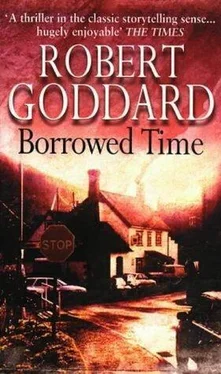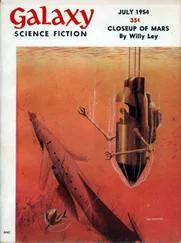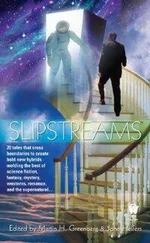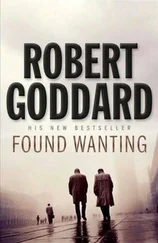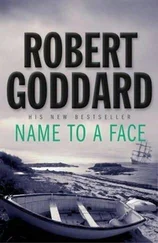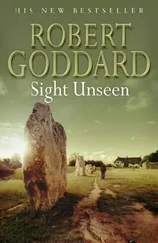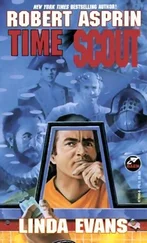Robert Goddard - Borrowed Time
Здесь есть возможность читать онлайн «Robert Goddard - Borrowed Time» весь текст электронной книги совершенно бесплатно (целиком полную версию без сокращений). В некоторых случаях можно слушать аудио, скачать через торрент в формате fb2 и присутствует краткое содержание. Жанр: Триллер, на английском языке. Описание произведения, (предисловие) а так же отзывы посетителей доступны на портале библиотеки ЛибКат.
- Название:Borrowed Time
- Автор:
- Жанр:
- Год:неизвестен
- ISBN:нет данных
- Рейтинг книги:5 / 5. Голосов: 1
-
Избранное:Добавить в избранное
- Отзывы:
-
Ваша оценка:
- 100
- 1
- 2
- 3
- 4
- 5
Borrowed Time: краткое содержание, описание и аннотация
Предлагаем к чтению аннотацию, описание, краткое содержание или предисловие (зависит от того, что написал сам автор книги «Borrowed Time»). Если вы не нашли необходимую информацию о книге — напишите в комментариях, мы постараемся отыскать её.
Borrowed Time — читать онлайн бесплатно полную книгу (весь текст) целиком
Ниже представлен текст книги, разбитый по страницам. Система сохранения места последней прочитанной страницы, позволяет с удобством читать онлайн бесплатно книгу «Borrowed Time», без необходимости каждый раз заново искать на чём Вы остановились. Поставьте закладку, и сможете в любой момент перейти на страницу, на которой закончили чтение.
Интервал:
Закладка:
It didn’t sound to me as if any of this amounted to very much. As the prosecuting counsel pointed out in his closing speech, Naylor might well have been at the Harp that evening. But the witness hadn’t been able to put a definite time on the sighting or identify Lady Paxton as Naylor’s companion. She could have been anyone, given Naylor’s roving eye. As for his late visit to the pub in Leominster, that could have been a futile attempt to set up an alibi. Futile because there was still plenty of time for him to have gone to Whistler’s Cot, murdered Bantock, raped and murdered Lady Paxton, then driven the fifteen miles to Leominster before eleven o’clock. By Naylor’s own admission, he’d had sexual intercourse with Lady Paxton. Did anybody seriously believe this was with Lady Paxton’s consent? If it was, why should she choose Whistler’s Cot as a venue? And why take Naylor into Bantock’s studio first? Because, of course, Naylor had to say she did so in order to account for the forensic evidence of his presence in the studio: the paint and the fibres. Whereas the real explanation was that he’d torn his clothing and stained his jeans during the fatal struggle with Oscar Bantock. When Lady Paxton had surprised him at the scene of the crime, he’d forced her to go upstairs and undress, probably threatening her with the knife or the gun. He’d raped her, as was shown by the amount of vaginal bruising, which he’d attempted, with breath-taking impudence, to attribute to masochistic tendencies on Lady Paxton’s part. Finally, he’d strangled her as he had Oscar Bantock, using a ligature of picture-hanging wire taken from the studio. Then he’d fled, the original purpose of his visit to the house forgotten. These were crimes of horrifying brutality, motivated by material and sexual greed and made possible by a complete indifference to the pain and suffering of others which Naylor had continued to exhibit in his outrageous mockery of a defence. Guilty verdicts on all three charges were the only appropriate way to respond.
Strong stuff. But Naylor’s barrister responded by pointing out that his client’s explanation of the events of 17 July 1990 was consistent with the evidence. He’d met Lady Paxton at the Harp, where they’d been seen together. They’d gone to Whistler’s Cot and had vigorous sexual intercourse, Lady Paxton having some good reason to believe the owner of the house wouldn’t return until later. Naylor had then left. Subsequently, a person or persons unknown had entered the house and murdered Lady Paxton and Bantock, who was either on the premises by then or arrived while the murderer was escaping. The estimated time of death, 9 to 10 p.m., was only that: an estimate. It certainly didn’t rule out such a sequence of events. As for the identity or motive of the murderer, who knew? The police had stopped looking once they’d found Naylor. He specifically denied making the confessions attributed to him by two witnesses, one of whom had a criminal record. Those witnesses were either mistaken or were lying for reasons of their own. Finally, it should be remembered that Naylor had been completely honest about his criminal lifestyle. He’d admitted four burglaries in the Kington area, all confirmed by the police. One of them had taken place only a few hours after he was supposed to have committed rape and double murder at Whistler’s Cot. Was this really what he’d have done after carrying out such horrendous acts? Surely not, his barrister urged the jury to agree. They should give his client the benefit of the doubt.
Yet very little doubt seemed to exist in the judge’s mind when he summed up. To accept Naylor’s version of events, he stressed, it was necessary to suppose that Lady Paxton had gone to Kington not simply to buy a painting but to satisfy a craving for casual sex with a stranger. If the jury found that improbable, they might well conclude that the defendant was guilty as charged. Naturally, they should give due weight to the possibility that he was telling the truth, but they should also remember that he had, by his own admission, lied in his initial statement to the police. The coincidence of an unknown murderer arriving at Whistler’s Cot shortly after his departure was, moreover, bound to strain credulity. The judge’s implication was clear.
And it wasn’t lost on the jury. Sent out rather later than Sir Keith had predicted, they returned within four hours and found Naylor guilty on all three counts. The judge condemned him for adding to the grief of the Paxton family with his mischievous and implausible defence and described him as a depraved and dangerous individual whom the public had every right to expect would be kept behind bars for a very long time. He sentenced Naylor to life imprisonment for each of the murders and ten years for the rape, all to run concurrently. As a final touch-much applauded by the press-he recommended a minimum term in custody of twenty years. Still protesting his innocence but no longer being listened to by anyone, Shaun Naylor was taken away to begin his sentence.
CHAPTER SEVEN
It was over. Louise Paxton was dead and buried. And now, with her murderer’s conviction and imprisonment, she could rest in peace. While I began the reluctant but inevitable process of forgetting her. Which is what I thought I would do. But, as the gap stretched between me and the one brief intersection of our lives, the recollection of our meeting grew somehow clearer, not fainter. I assumed this would eventually cease. The rational part of my mind dismissed it as a caprice of the imagination and waited patiently for it to fade. But it didn’t fade. It seemed to draw a curious energy from the passage of time, to become slowly more elusive yet more potent by the day. Whenever I was tired or alone or thinking of nothing in particular, the components of that evening on Hergest Ridge would reassemble themselves in my mind. The quality of the light. The pitch of the slope. The colour of the grass. The shade of her hair. The look in her eye. And her words. Every phrase. Every nuance. Yet always the question was the same. “ Can we really change anything? ” And whatever answer I chose made no difference. Because she was out of earshot now. For ever.
Louise Paxton’s memory may not have withered, but my association with her family showed every sign of doing so. Sarah invited me to a party at The Hurdles on the last Saturday in June. A crowd of her fellow students from the College of Law were there to celebrate the end of the course, with Bella presiding good-humouredly over their exuberances. I felt old and out of place and wished I hadn’t gone. Sarah was busy playing the part of hostess and couldn’t spare me much attention. It was Bella, in fact, who brought me up to date with her plans.
“Rowena’s going to take up a deferred place at Bristol University in the autumn. Keith thinks she’ll be able to cope with student life by then. And he hopes Sarah will be able to help her. She’s trying to arrange to do her articles in Bristol. Then they could live together. That would give Rowena some of the security she needs. I shall be sorry to be left alone here again, but… well… maybe I won’t be for long.”
“Another lodger?”
“Not exactly. Not yet, anyway. I’m planning to go abroad next month.”
“Where to?”
“Biarritz, as a matter of fact. Keith’s asked me.”
“Really? Well, I… I hope…”
“We enjoy ourselves? Thank you, Robin. I’ll try to make sure we do.”
So Sir Keith was in Biarritz with Bella, and his daughters-I later learned-were on a Greek island together when the anniversary of the Kington killings came round. I hardly remember where I was. But I know where my thoughts were dwelling.
The summer of 1991 was a good one for Timariot & Small. The cricket bat business was relatively unaffected by the general economic recession. I suppose that’s why we had so few qualms about the takeover of Viburna Sportswear following Jennifer’s favourable report on its finances. She and Adrian went out there again in August to finalize the terms and Simon was looking forward to spending much of the Antipodean spring in Melbourne, setting up various cross-promotional schemes. As works director I had no need to go myself, since Viburna’s former chairman and chief executive, Greg Dyson, was staying on to manage production at the Australian end. Viburna Sportswear formally became a subsidiary of Timariot & Small on 1 October 1991. The way was clear for Adrian’s international ambitions to take flight.
Читать дальшеИнтервал:
Закладка:
Похожие книги на «Borrowed Time»
Представляем Вашему вниманию похожие книги на «Borrowed Time» списком для выбора. Мы отобрали схожую по названию и смыслу литературу в надежде предоставить читателям больше вариантов отыскать новые, интересные, ещё непрочитанные произведения.
Обсуждение, отзывы о книге «Borrowed Time» и просто собственные мнения читателей. Оставьте ваши комментарии, напишите, что Вы думаете о произведении, его смысле или главных героях. Укажите что конкретно понравилось, а что нет, и почему Вы так считаете.
